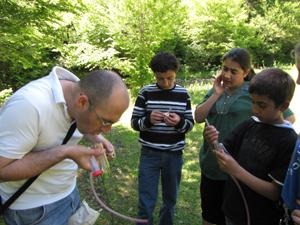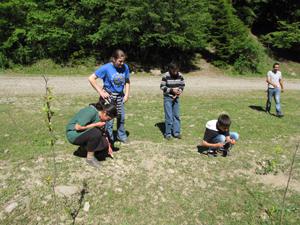Nana Gratiashvili
Other projects
11 Apr 2014
Investigation of Threatened Ants and Ant Associated Butterflies and Education of Local People for Insect Conservation in Samtskhe-Javakheti Region, Georgia
Our project aim is to investigate the endemic ant species Myrmoxenus tamarae in Borjomi district (Samtskhe-Javakheti region), to educate local people and school pupils about the importance of this threatened ant as an indicator in the forest ecosystem.
Ants live in almost all terrestrial habitats and they play an important or even dominant role in Ecology. Some ant species have a comparatively high extinction risk, because their population sizes are rather small, as most individuals (the workers) don’t reproduce.

Myrmoxenus tamarae is a social parasitic, slave-making ant, which lives in the nests of 2 slave ants- Temnothorax spp. in the village Daba of Borjomi district. Knowledge about endemic ant species takes low priority in local communities, which causes anthropogenic impact on ants by polluting, logging and burning of their habitats. This project brings knowledge to local people and pupils about the importance of a local endemic ant as a bioindicator and gives recommendations on the protection of the ant to avoid its extinction in the future.

We plan to use M. tamarae as an indicator for assessment of forest condition in burned and unburned sites of the Lesser Caucasus. Besides, we intend to find other sites of M. tamarae distribution in the Lesser Caucasus and reassess conservation status of this ant.
We plan to organize seminars and excursions in Samtskhe-Javakheti region. During the seminars we will give detailed information to the local people about the importance of a local endemic ant as a bioindicator and give recommendations on its protection to avoid its extinction in the future. During excursions local school pupils will be included in the field investigations to provoke interest in the disciplines which are associated with biodiversity research or simply learn principles for correct management and conservation of the threatened species and the habitat as a whole.
We intend to publish and distribute illustrated booklets for local people about the slave-making ant: its life history, reassessed conservation status, its use in the bioindication and threats caused by anthropogenic factors, to increase their interest in nature conservation in general.